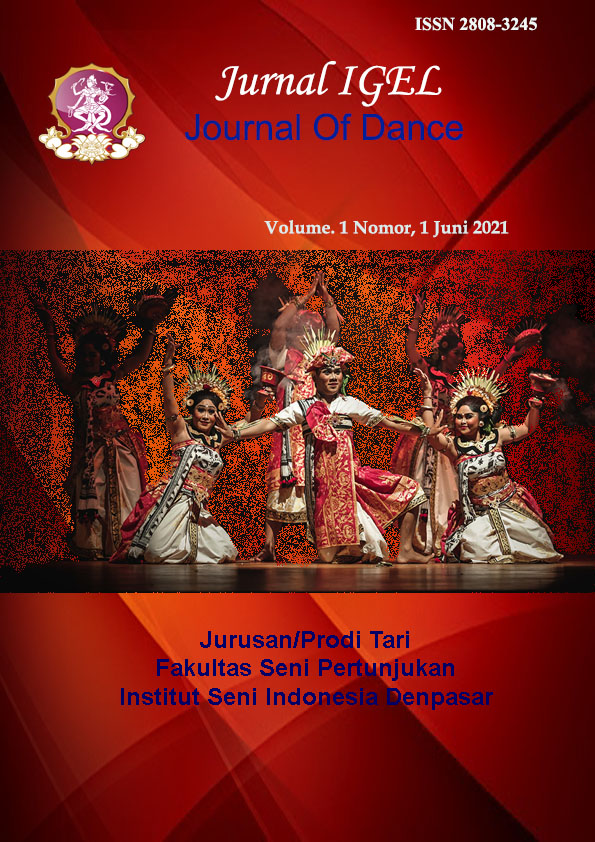Tari Ngalebar
DOI:
https://doi.org/10.59997/journalofdance.v1i1.818Abstract
The Mabuu - buu tradition is a cultural event, carried out every year in the context of Nyepi in the
Panjer Traditional Village, Denpasar. The event has the meaning Nyomya sekala - niskala which
means neutralizing, balancing Bhuana Agung and Bhuana Alit. The understanding of Nyomya is
controlling oneself through good thoughts, words and deeds. In this day and age, the understanding of
Nyomya is often ignored, seen from the behavior of modern society which always vents emotion.
Through this phenomenon, the creators are interested in creating dance works that express unrestrained
thought fluctuations, which are implemented into contemporary expressions of kerawuhan motion with
the title Ngalebar. The process of creating this dance, using the method of Creating Through Dance by
Y Sumandiyo Hadi, describes exploration (exploration), improvisation (experimental), and
composition (formation). To ensure the creation of this work, using the theory of Imagination which
means the formation of motion from the results of images or imagining the meaning of Nyomya, and the
theory of Aesthetics ngunda bayu which is the distribution of energy in the body. The theme of this
work is spiritualization (formation of the soul) danced by seven dancers using the gamelan
accompaniment Gong Gede Saih Pitu in collaboration with the keyboard. Ngalebar Dance is a
contemporary dance work depicting human reflection, trying to exercise self-control or introspection to
achieve sekala - niskala harmony and to end it returned according to its position.
Keywords: Ngalebar, Mabuu - buu, Skala - niskala and Contemporary

Additional Files
Published
Issue
Section
License
Copyright (c) 2021 Agus Ari Yana

This work is licensed under a Creative Commons Attribution-NonCommercial-ShareAlike 4.0 International License.
Volume 2 Nomor 1, Juni 2022







